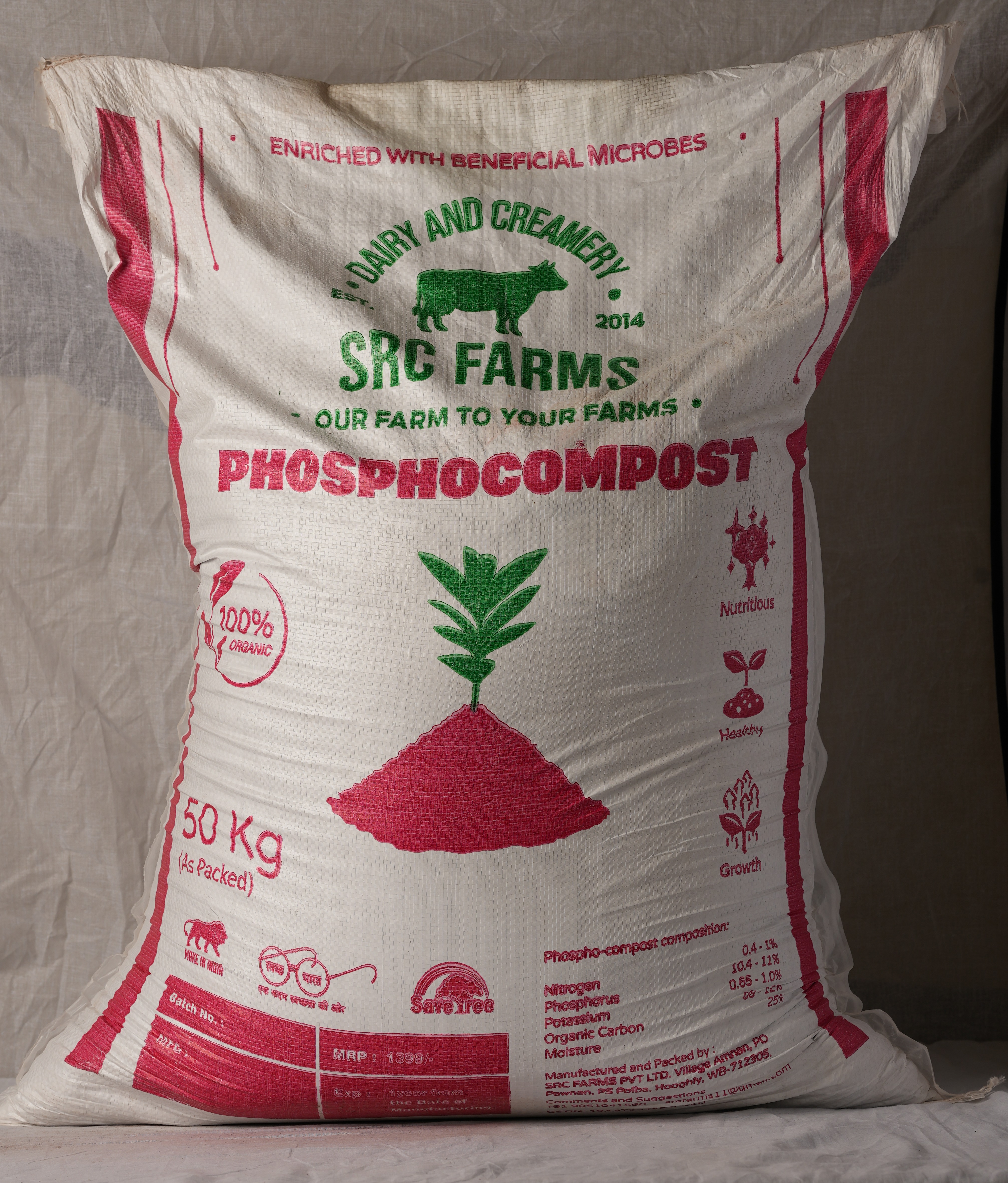Vermicompost- 5 Kg
Vermicomposting is a type of composting in which worms are used to break down organic materials into nutrient-rich compost. The worms commonly used in vermicomposting are red wigglers (Eisenia fetida) and redworms (Lumbricus rubellus). These worms consume organic waste materials such as farm yard manure, food wastes and agriculture wastes, digesting them and converting them into a valuable soil supplement known as vermicompost.
Vermicompost is a valuable soil amendment that can improve soil structure, increase nutrient content, and enhance soil microbial activity. It is often used in gardening, agriculture, and landscaping to enrich the soil and promote plant growth. Vermicomposting is a sustainable and environmentally friendly way to manage organic waste and create a valuable resource for soil health and fertility.
SRC Vermicompost
SRC Dairy Farm is Eastern India’s first fully automated dairy farm, located in Hooghly, West Bengal. As we have our own cow farm, we use 100% cow dung in our vermicompost production.
Cow dung is the topmost organic input material for agriculture. Cows are being fed with top-quality fodder and we do not feed any weed grass to our cows. Cow dung is being processed in a 400 cubic meter capacity biodigester where all harmful components, pathogens are being removed with a biological process. Well-digested material is being used for the manufacturing of vermicompost.
By using bio digesters, we also reduce greenhouse gas emissions remarkably. A healthy product can only keep your plants healthiest.
Benefits of SRC Vermicompost:
• A unique worm Eisenia fetida is used for making vermicompost.
• High level of organic carbon, almost 20% plus
• 100% of cow dung is being processed in biodigester where all harmful components are being removed with a biological process.
• It enables plant roots to have better access to nutrients.
• The crop can withstand diseases as well as the harvest is tasty and nutritious.
• It enhances the growth of beneficial soil microorganisms that assist the dissolution of Phosphorus either applied to the soil or naturally present in the soil.
• Improves the water-holding capacity of soil and keeps the fertility of land alive.
• Prevents the land from being acidic and toxic
Vermicompost Nutritional Composition
Organic Carbon 15.0% to 22%
Nitrogen : 0.8 - 1.2 %
Phosphorus: 0.5 – 1.6 %
Potassium: 0.8 – 1.6 %
Calcium : 0.3 - 0.7 %
Magnesium : 0.4 - 0.7 %
Sulphur : 0.4 - 0.6 %
Iron : 1000 - 1200 ppm
Zinc : 300 - 400 ppm
Copper : 150 - 200 ppm
Boron : 1000 - 8000 ppm
Humic Acid : 5 - 6 %
Organic Carbon: 30 %
Moisture : 40 %
PH: 7.0 to 7.4
Dosage:
1. Ornamental & Indoor Plants: 150 g - 200 g per Plant once in 30 Days.
2. Flowering & Outdoor Plants: 200 g - 250 g per Plant once in 30 Days.
3. Kitchen Garden Plants: 100 g - 200 g per Plant once in 30 Days.
4. Lawns & Planting Beds: 0.25 inch to 0.5-inch layer once in 3 Months.
5. Newly potted crops keep the mass concentration of 10% vermicompost in the mixture of soil and vermicompost.
6. Rest all fruits, vegetables and other crops.
Crops Quantity Time to Apply
|
| 2 kg per tree At Planting time
Mango, Chiku, Coconut, | 5 kg per tree 1–5-year-old tree
Guava, Pomegranate | 10 kg per tree Trees older than 5 years.
and all fruit crops. |
Directions for Use:
Step 1: Loosen the soil around the plant using a cultivator.
Step 2: Apply the Vermicompost by sprinkling near the root zone of the plants.
Step 3: Water the plants after application of manure to mix it properly with the soil.





